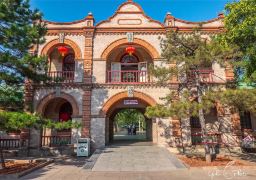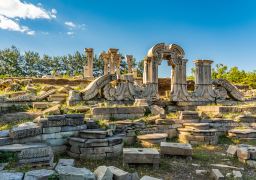The Beijing Botanical Garden of the Institute of Botany, Chinese Academy of Sciences is located on Xiangshan South Road, Haidian District, Beijing. It is adjacent to the Beijing Botanical Garden in the north, and not far to the west is Xiangshan Park. Compared with the Beijing Botanical Garden in the north, people are more willing to call this place Nanzhi. The Beijing Botanical Garden of the Institute of Botany, Chinese Academy of Sciences was built in 1956 under the advocacy of academician Yu Dejun and other senior botanists, and was approved by the central people’s government for site selection.
Its positioning is: (1) a reserve for national strategic plant resources; (2) a research base for ex situ conservation and sustainable utilization of plant diversity in northern China; (3) a national science popularization education base. The botanical garden currently has a land area of 74 hectares, of which the exhibition area is 20.7 hectares. There are 15 specialized gardens and a tropical plant exhibition greenhouse. More than 7,000 species (varieties) of plants are collected and preserved. There is a North China branch of wild plant germplasm resources (including seed bank, plant in vitro bank and DNA material bank), which supports and serves the construction of the Institute of Botany’s ‘135’ plan and the characteristic institute of ecological grass and animal husbandry. The botanical garden mainly collects and preserves wild plant resources in the northern temperate zone of China and regions with similar global ecological environments. It focuses on the investigation, collection and conservation of rare and endangered plants, endemic plants, and native plants in North China. At the same time, it also takes into account research in aspects such as the collection and functional evaluation of important resource plants, the discovery and regulation of key genes, and the creation and application of excellent germplasm. Guided by the Chinese Academy of Sciences’ plan of ‘popularizing high-end scientific research resources’ and the plan of ‘Science and China’ science education, the botanical garden conducts in-depth public science education activities. It receives more than 250,000 public science popularization visits annually and more than 3,000 off-campus science education visits for primary and secondary school students. It has been awarded titles such as the national science popularization education base, the national scientific research and popularization base, the national forestry science popularization base, the national wild plant protection science popularization education base, the national youth science and technology education base, the national research and practice education base for primary and secondary school students, the Beijing science popularization base, and the resource unit of Beijing primary and secondary school students’ social classroom. Opening hours: Open from 08:00 to 18:00 from November 16 to March 15; open from 08:00 to 18:00 from March 16 to November 15. The greenhouse in the south garden is closed on Monday morning and resumes opening at 12:00. Preferential policies: Children: Children under 1.2 meters (inclusive) in height are free. Disabled people: Disabled people with disability certificates are free. Military personnel/Armed Police officers and soldiers: Active-duty military personnel and Armed Police officers and soldiers with valid certificates are free. Elderly people: Elderly people with senior citizen cards are free (except on holidays). Students: College, high school and primary school students (excluding adult education) with valid identity documents are half price. People with social security payment receipt: People with social security payment receipt are half price with the certificate.South Garden of National Botanical Garden
The Beijing Botanical Garden of the Institute of Botany, Chinese Academy of Sciences is located on X[...]









